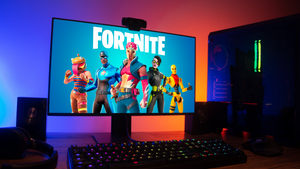A copyright lawsuit against Epic Games in relation to a Fortnite emote has been revived after appeal judges concluded that a lower court was wrong to dismiss the case on the basis that dance moves allegedly copied by the game were too generic.
Choreographer Kyle Hanagami sued Epic in the US last year, claiming that a dance sequence he created for Charlie Puth’s ‘How Long’ video had been ripped off by Fortnite for one of its emotes, which gamers obtain in order to allow their in-game avatars to move in a certain way.
It's not the first time Fortnite has been accused of infringing the copyright in a piece of choreography through the movements featured in one of its emotes, though previous legal claims have generally failed. Hanagami's case did seem stronger, but was nevertheless dismissed because the poses used in the offending emote were too few and too generic.
But, the Ninth Circuit Appeals Court reckons, things are a little more complicated than that. And not just because the disputed emote here is called It's Complicated.
"While it is true that, like other forms of copyrightable material such as music, choreography is composed of various elements that are unprotectable when viewed in isolation", they write in their new ruling, "what is protectable is the choreographer’s selection and arrangement of the work’s otherwise unprotectable elements".
"'Poses' are not the only relevant element", they add, "and a choreographic work also may include body position, body shape, body actions, transitions, use of space, timing, pauses, energy, canon, motif, contrast and repetition".
The judges then conclude: "Hanagami plausibly alleged that the creative choices he made in selecting and arranging elements of the choreography - the movement of the limbs, movement of the hands and fingers, head and shoulder movement, and tempo - were substantially similar to the choices Epic made in creating the emote".
To that end, the judges confirm they have "reversed the district court’s dismissal of an action under the Copyright Act and remanded for further proceedings on claims of direct and contributory infringement of a choreographic work".

